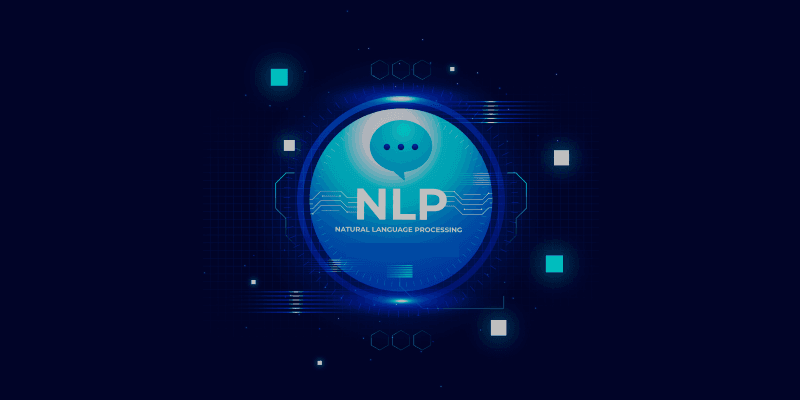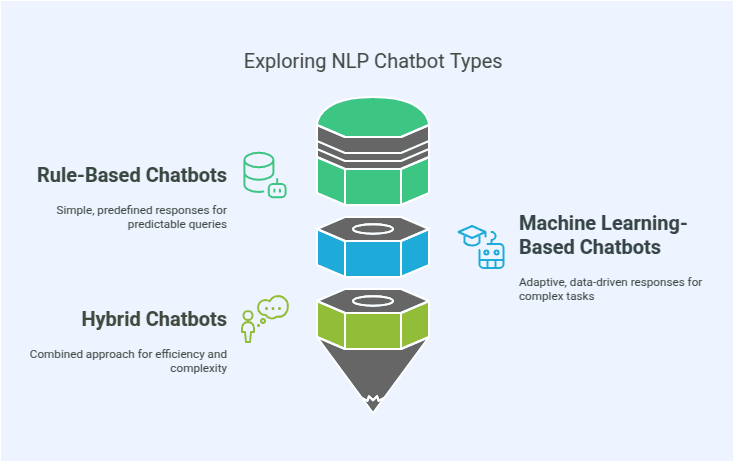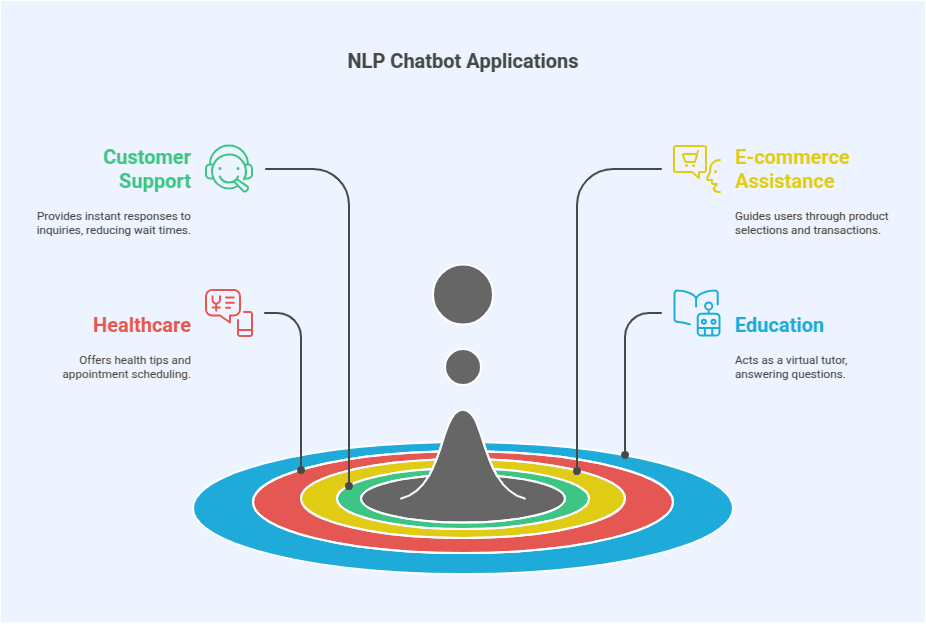Intro to Natural Processing ( NLP) Chatbots

Introduction to Natural Language Processing (NLP) Chatbots
In the digital age, communication between humans and machines has evolved significantly. One of the most remarkable advancements in this domain is the development of chatbots powered by Natural Language Processing (NLP).
These chatbots have revolutionized the way businesses interact with customers, automate tasks, and provide seamless user experiences.
From customer service to healthcare, education, and beyond, NLP chatbots are transforming industries by making interactions more efficient and personalized.
What is Natural Language Processing (NLP)?
Natural Language Processing (NLP) is a subfield of artificial intelligence (AI) that focuses on enabling machines to understand, interpret, and generate human language.
NLP bridges the gap between human communication and computer understanding, making it possible for machines to process text and speech in a way that feels natural to users.
By employing techniques from linguistics, computer science, and machine learning, NLP allows systems to decode the complexities of language, including grammar, semantics, and syntax.
Evolution of Chatbots
.svg)
Chatbots have come a long way from their inception as simple rule-based systems to becoming sophisticated AI-driven models.
Early chatbots operated on predefined scripts, offering limited responses and being unable to handle diverse conversations.
However, advancements in machine learning, neural networks, and large language models have led to modern NLP chatbots.
These can comprehend context, recognize user intent, and deliver interactions that are increasingly indistinguishable from human communication. Some key milestones in chatbot evolution include:
Rule-Based Systems: Relying on decision trees and fixed patterns, these were limited to predefined tasks.
Statistical Models: The introduction of probabilistic models allowed chatbots to improve through data.
Deep Learning Models: Leveraging neural networks, deep learning has enabled chatbots to achieve greater contextual understanding and language generation.
How NLP Powers Chatbots
Natural Language Processing (NLP) is a branch of artificial intelligence (AI) that enables computers to understand, interpret, and respond meaningfully to human language.
NLP powers modern chatbots, capable of holding natural, engaging, and effective conversations. Let’s explore the specific ways NLP contributes to the functionality and efficiency of chatbots:
1. Intent Recognition
The first step in any chatbot interaction is understanding what the user wants, which is where intent recognition comes in. NLP algorithms help identify the core intention behind a user’s message.
- Example: If a user types, “Can I book a flight to New York for next Monday?”, the chatbot recognizes the intent as “flight booking.”
- How It Works: Intent recognition uses algorithms like machine learning classifiers or transformer-based models that analyze the structure and semantics of the text to determine intent. Techniques like pattern matching or predefined intents also aid this process.
By accurately interpreting the user’s goal, NLP helps the chatbot determine the appropriate action.
2. Entity Recognition
Entity recognition involves identifying specific pieces of information, or “entities,” in a conversation. These entities can include names, dates, times, locations, product names, etc.
- Example: In the sentence “Book a flight to Indore on January 15th,” entities like "Indore" (location) and "January 15th" (date) are extracted.
- How It Works: NLP models use techniques like Named Entity Recognition (NER) to classify words or phrases into predefined categories. Pretrained NLP libraries (e.g., spaCy or NLTK) can assist in spotting these entities within user input.
Entity recognition allows the chatbot to extract crucial details for making decisions or completing user requests efficiently.
3. Context Management
Context management ensures that a chatbot can hold multi-turn conversations that feel natural. Without it, a chatbot may give disjointed responses, leading to frustration for the user.
- Example: Here, the chatbot keeps track of earlier information to make the ongoing conversation coherent.
- How It Works: Advanced NLP systems leverage memory mechanisms and contextual embeddings to maintain context. Tools like dialog state tracking in conversational AI platforms (e.g., Rasa or Dialogflow) enhance this functionality.
Maintaining context enables a seamless, personalized experience, especially in extended interactions.
4. Sentiment Analysis
Sentiment analysis involves understanding the tone, mood, or emotion expressed in the user’s message, which is critical for adapting the chatbot’s responses.
- Example: If a user types, “I’m upset about the late delivery,” the chatbot can identify negative sentiment and respond empathetically, saying, “I’m sorry to hear about this inconvenience. Let me help resolve it for you.”
- How It Works: Sentiment analysis uses NLP models trained to categorize text into sentiments such as positive, neutral, or negative. Transformer-based models like BERT can analyze emotions and predict the sentiment behind user inputs.
This capability ensures the chatbot maintains a friendly and appropriate tone throughout the conversation.
5. Language Generation
Language generation enables chatbots to produce natural, conversational responses instead of relying solely on predefined scripts.
- Example: When a user asks, “What’s the weather like in Pune tomorrow?” the chatbot might generate a response like, “Tomorrow’s forecast in Pune predicts cloudy skies with temperatures around 10°C.”
- How It Works: Models like GPT (Generative Pre-trained Transformer) are employed for text generation, allowing the chatbot to craft human-like replies. The use of large datasets ensures fluent, contextually relevant, and diverse outputs.
By integrating language generation, NLP empowers chatbots to appear more intelligent, dynamic, and human-like in their interactions.
Types of NLP Chatbots

NLP chatbots come in different types, each suited for different use cases and industries:
- Rule-Based Chatbots: These operate based on predefined rules and responses. They are simple to develop and are effective in situations where queries are predictable and can be scripted. They are often used in industries like customer service for handling basic FAQs.
- Machine Learning-Based Chatbots: These chatbots learn from data and improve their responses over time. They are more flexible and dynamic, making them suitable for complex tasks, such as lead generation, in industries like e-commerce and healthcare.
- Hybrid Chatbots: A combination of both rule-based and machine learning-based approaches, hybrid chatbots leverage the strengths of both systems. They offer more complex functionality while maintaining efficiency and accuracy in predictable scenarios. Hybrid models are often employed in customer service and tech support.
NLP Models and Frameworks for Chatbot Development
.png&w=1920&q=75)
Several frameworks and tools help developers build efficient NLP chatbots:
- Dialogflow: A Google-owned platform that provides a comprehensive set of tools to build conversational interfaces. It offers pre-built models for speech recognition, natural language understanding, and dialogue management.
- Rasa: An open-source conversational AI framework that allows for more customization and flexibility. It offers features like intent recognition and dialogue management, making it suitable for complex chatbot applications in industries like healthcare and banking.
- Transformers (e.g., GPT models): These state-of-the-art models, such as OpenAI’s GPT, excel in generating human-like text and understanding context. They are ideal for building chatbots that require complex language generation, such as for virtual assistants and content creation.
- Microsoft Bot Framework: A comprehensive framework for building enterprise-grade chatbots with multi-language support. Integrates with Azure Cognitive Services for additional AI capabilities.
- Watson Assistant: IBM’s conversational AI offering robust NLP capabilities, ideal for industries such as banking and customer service.
Emerging Trends in NLP Chatbot Development
The field of NLP chatbots is rapidly evolving, and several trends are emerging that will define the future of chatbot interactions:
- Conversational AI: The integration of NLP chatbots with advanced AI models is enabling more meaningful, context-aware conversations. This allows chatbots to engage users in natural, two-way conversations.
- Multi-Modal Bots: These bots combine different communication methods, such as text, speech, and images, to offer more dynamic and interactive experiences. For example, a multi-modal bot in retail could guide users with both text and images of products.
- Speech Recognition and Synthesis: The integration of NLP with speech recognition and synthesis technologies is paving the way for voice-enabled chatbots. This trend is gaining traction in industries like healthcare, where voice assistants can provide hands-free support.
- Personalized Interactions: Future chatbots will increasingly rely on user data and behavioral patterns to deliver highly customized experiences.
- Ethical AI: As chatbots handle sensitive information, ensuring data privacy and ethical AI practices is becoming a priority.
Applications of NLP Chatbots

Customer Support: NLP chatbots provide instant responses to customer inquiries, reducing wait times and improving satisfaction.
E-commerce Assistance: They guide users through product selections, provide recommendations, and handle transactions.
Healthcare: Chatbots offer health tips, appointment scheduling, and preliminary medical advice.
Education: They serve as virtual tutors, answering questions and assisting with learning materials.
Benefits of NLP Chatbots
.png&w=1920&q=75)
24/7 Availability: Chatbots are always online, providing round-the-clock support.
Cost Efficiency: They reduce the need for large customer service teams.
Scalability: Chatbots can handle thousands of interactions simultaneously.
Personalization: NLP enables tailored responses based on user preferences and behavior.
Challenges in NLP Chatbot Development
Understanding Ambiguity: Human language is complex and often ambiguous, making accurate interpretation challenging.
Multilingual Support: Developing chatbots that understand multiple languages requires extensive training data.
Contextual Understanding: Maintaining context over long conversations remains a complex task.
The Future of NLP Chatbots
The future of NLP chatbots is promising, driven by advancements in AI and related technologies. Key developments expected include:
Voice Integration: Enhanced speech recognition and synthesis for voice-first interactions.
Emotional Intelligence: Chatbots equipped to understand and respond to users’ emotions.
Multilingual Proficiency: Expanding language capabilities to enable global reach.
Seamless Integration: Improved compatibility with existing business tools and platforms.
As businesses and technologies continue to embrace these intelligent systems, NLP chatbots are set to play an even more pivotal role in redefining user experiences, driving efficiency, and fostering deeper engagement across industries.
Conclusion
Natural Language Processing has fundamentally transformed the capabilities of chatbots, enabling more natural, intelligent, and effective communication between humans and machines. As technology continues to evolve, NLP chatbots will play an increasingly pivotal role in shaping the future of digital interactions.
